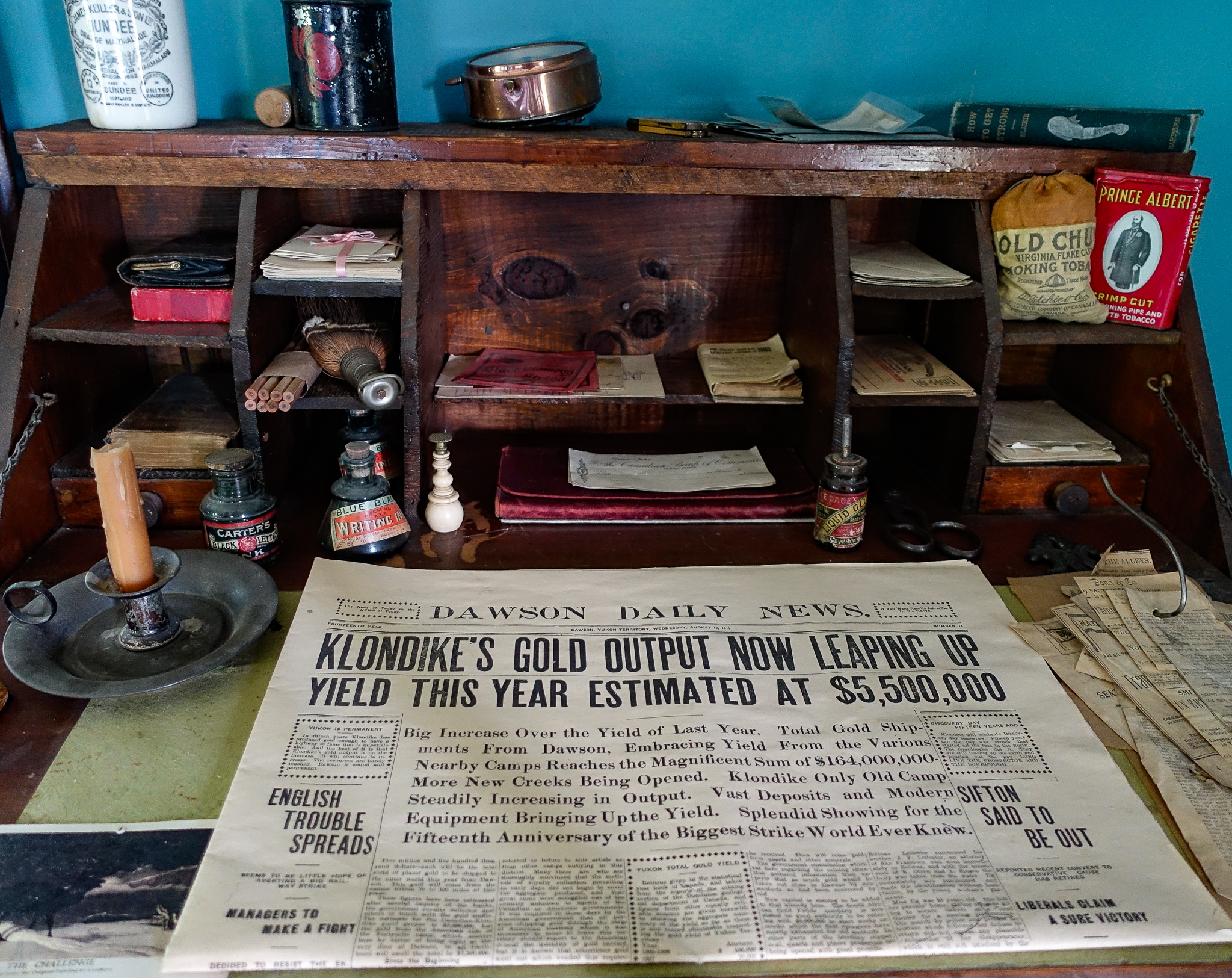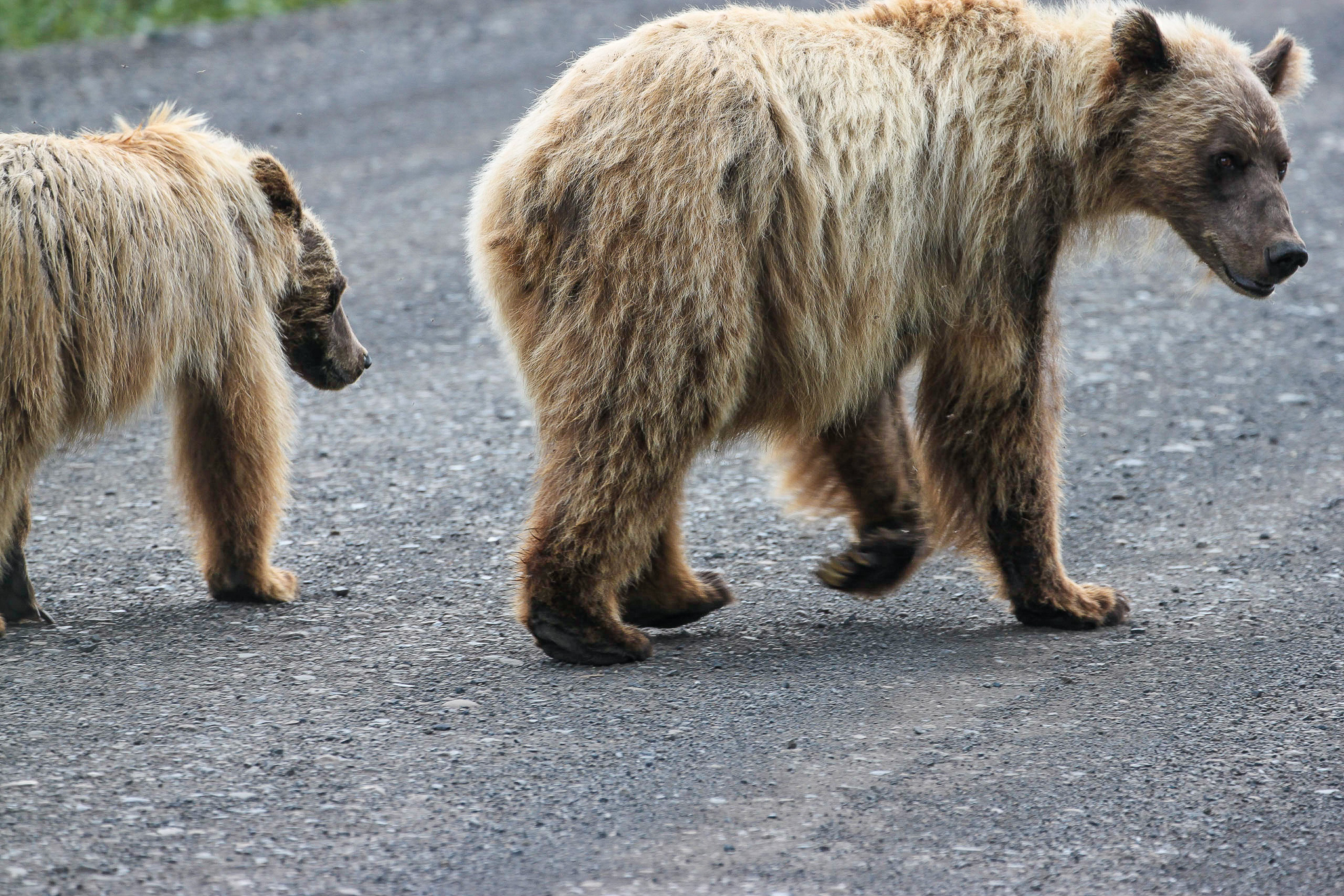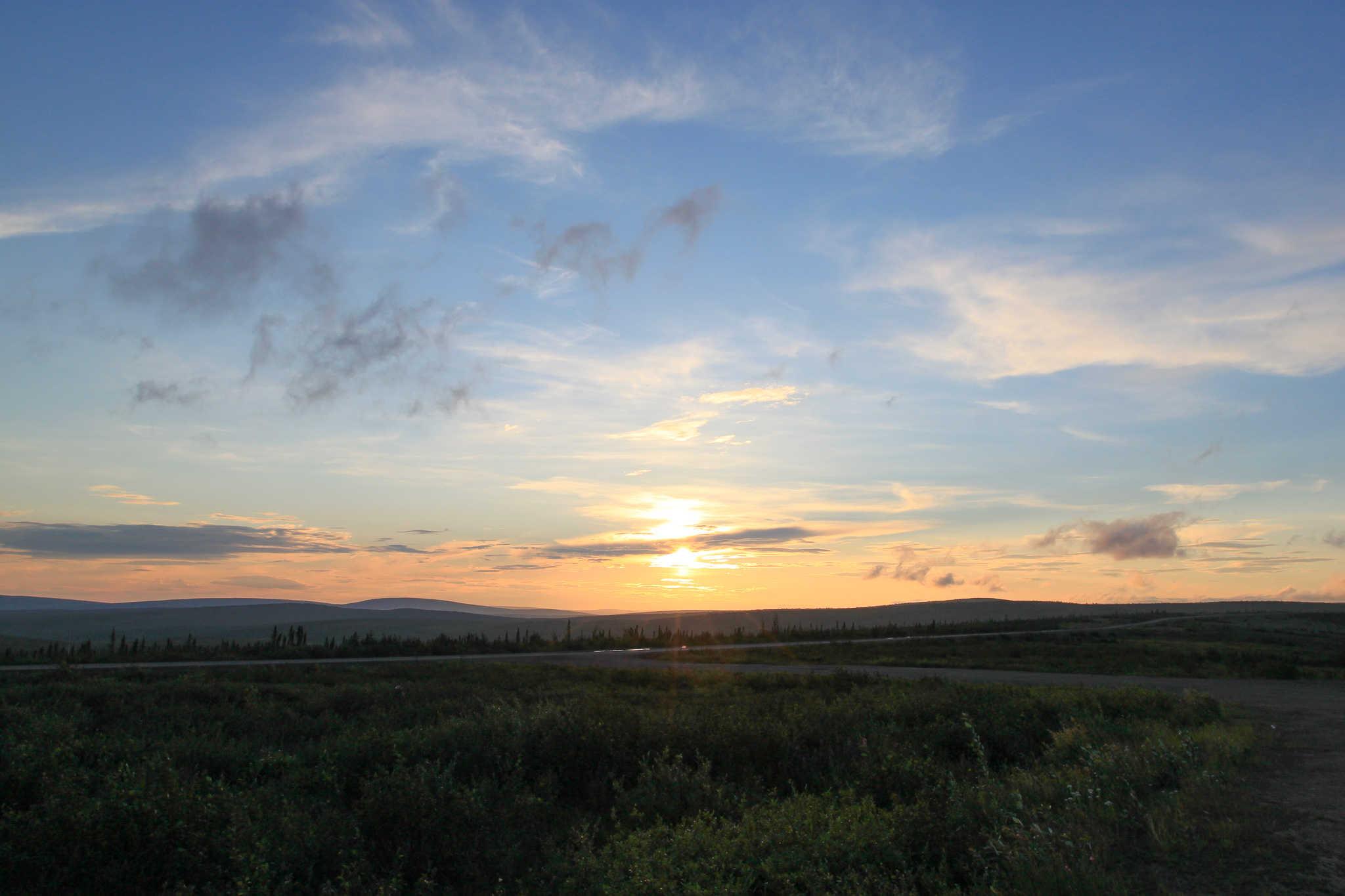THE DEMPSTER HIGHWAY - ROAD TO THE MIDNIGHT SUN
DAWSON CITY, HUB OF THE 1896 KLONDIKE GOLD RUSH.
In 1896, Skookum Jim and George Carmack heaved a shovel of yellow dirt from Rabbit Creek and let rip with a cry of glee. With their whoops still hollering in the valley, Dawson City established its credentials. Rising from marshy land at the confluence of the Yukon and Klondike rivers, this new town was to be the hub of a short-lived, albeit frenzied bonanza.
In the gritty years of the 1897/98 stampede, Dawson City was a tough place just to exist, let alone scrabble for a pan of gold. Today, if you slip on your sepia-tinted glasses, sweep the motorhomes and the Harley Davidson motorcycles off the dirt streets, you’ll have a pretty good idea of what the town looked like one hundred years ago. I’m not sure if Sourdough Joe’s restaurant existed in the days of the gold rush, but if you’re heading beyond the Arctic Circle, all the way up the Dempster Highway to the town of Inuvik, it’s important to tuck away the best halibut and chips the town has to offer. For who knows what lies on the other side?
A YUKON STEAMBOAT ALONGSIDE THE QUAY AT DAWSON.
THERE ARE HARSH PENALTIES FOR THOSE WHO STEP OUT OF LINE IN DAWSON.
IN THE MID-30S, THE FLORA DORA HOTEL WAS THE PROPERTY OF MADAME RUBY SCOTT. THE PRICES FOR “LIBERTY” OR “CECILE” WERE $5 A TIME OR $20 FOR THE NIGHT. A DREDGERMAN EARNED $5 FOR A 12 HOUR SHIFT.
A RELIC FROM A BYGONE ERA.
FOR SOME, THE END OF A LONG RIDE.
NEWS FROM THE OLD DAYS.
When news of the gold strike broke, thousands converged on the Klondike River from all points of the compass. The White and Chilkoot passes proved the most popular of all the trails of ‘98, though many paddled the Mackenzie River, casting off from Edmonton, their bows pointing towards the Arctic Circle. Schoolmasters and policemen, bankers and lawyers, artists and ventriloquists - the stampeders emerged from all walks of society, hostage to the whiff of adventure. For many the journey took eighteen months, the harsh winters literally freezing them to the spot. It’s of little surprise how the history of the Klondike Gold Rush has more to do with stories of survival than financial enrichment.
A POEM BY THE “BARD OF THE YUKON”, ROBERT SERVICE.
Heading north in the late afternoon, we cut between the Klondike and Snowy Ranges, making camp by six in the evening. In the campsite, a freshly typed message had been pinned to the campsite noticeboard; it warned of how a wolf had been present the previous day. Campers were strongly advised not to feed it. However, it wasn’t the wolves causing us distress: we soon learnt how the infamous Yukon mosquitoes were living up to their reputation. They say these mosquitoes will suck a pint of blood from a moose every twenty-four hours.
HEADING NORTH INTO THE SNOWY RANGES.
COTTONGRASS GROWING BESIDE THE ROAD.
FIREWEED PROVIDES VIVID FLASHES OF COLOUR ALONG THE WAY.
WE STOP OFTEN TO APPRECIATE THE SEEMINGLY ENDLESS WILDERNESS.
AN OVERLANDER WAITING TO CROSS THE MACKENZIE RIVER.
CONSTRUCTION OF THE DEMPSTER HIGHWAY BEGAN IN 1959. IT REACHED INUVIK BY 1979. ONLY IN WINTER, ON THE ICE ROAD THROUGH THE MACKENZIE DELTA, WAS IT POSSIBLE TO REACH THE MORE NORTHERN SETTLEMENT OF TUKTOYAKTUK, SINCE OUR VISIT IN 2016 AN ALL-WEATHER ROAD HAS NOW BEEN COMPLETED, LINKING INUVIK TO TUKTOYAKTUK.
We left the forest and climbed over the Ogilvy and Richardson mountains. Having avoided the stones fired from the the tires of the passing trucks meant we crossed the Arctic Circle and entered the Northwest Territories with our windscreen relatively intact. The gravel clattered against the underside of the camper as we descended to the delta, cutting a dusty swathe through the boreal forest. Catching the last ferry boat of the evening across the Mackenzie River, we decided to call it a day and camped for the night thirty kilometers short of Inuvik. It had been a long and satisfying five hundred kilometre drive.
NEARING THE END OF THE ROAD.
CROSSING THE PEEL RIVER.
ONLY ONE MOOSE IN “TWO MOOSE LAKE”. IT’S SAID THAT THE MOSQUITOES OUT HERE WILL SUCK A PINT OF BLOOD FROM A MOOSE EVERY 24 HOURS.
MAKE WAY FOR THE BEARS.
CROSSING THE ARCTIC CIRCLE.
THE VIEW WEST FROM EAGLE PLAINS. THE EAGLE PLAINS HOTEL IS THE ONLY PLACE TO PROVIDE SUCCOUR FOR MILES AROUND. ANY WILDLIFE YOU MAY HAVE MISSED ON THE TRAIL, YOU’RE SURE TO FIND THE HEAD OF ITS COUSIN NAILED TO THE WALL IN THE BAR.
THE LAND OF THE MIDNIGHT SUN. ONE OF THE CHALLENGES IN THE SUMMER MONTHS IS CREATING ENOUGH DARKNESS IN THE CAMPER DURING THE NIGHT. IT WAS TIME TO SLIP ON THE EYE PATCHES AND GRAB SOME SLEEP.
The good people of Inuvik enjoy fifty-six days of twenty-four hour daylight (late June, July and early August) and thirty days (mostly in December) without any daylight to speak of. For us, comparisons with Ushaia, where we began our drive north, were inevitable. Inuvik has no cruise ships, no Russians buying all the vodka at the duty-free store, no signs calling the British pirates for stealing Islas Malvinas (the Falkland Islands), no bustling restaurants and bars and no snow - in fact, it was positively warm. Where Ushaia had felt vibrant, Inuvik was comatose; they were, quite literally, a world apart.
At least the place never promised to be anything other than an unsophisticated supply town for the oil industry. Inuvik had materialised from the wilderness as the perfect reminder of how overlanding is all about the journey, not the destination.
Having camped in the Happy Valley Territorial Park campsite, we made a beeline for the Mad Trapper Inn, said to be Inuvik’s only pub. I like to think we’re reasonably observant, though it took two passes before we recognised the beige-coloured corrugated panels as signalling our arrival at the Mad Trapper. Having tracked it down, we mounted the steps and pushed through the door. The walls were festooned with sporting memorabilia and widescreen TVs broadcast a baseball game from faraway Toronto. Around us groups of drinkers perched at tables. They’d amassed a tidy collection of empty spirit bottles and toppled beer cans. Clearly on a roll, they were loosening up for the Welder’s Daughter, the evening’s feature band. Happy at our achievement, we bought a couple of luke-warm beers and perched on high stools. In the bar’s sombre light we clinked our bottles together, celebrating our Americas road trip - we’d come a long way.
750 KILOMETRES AFTER LEAVING DAWSON WE ARRIVE AT INUVIK.
THE MAD TRAPPER INN. IT WAS HERE WE CELEBRATED OUR AMERICAS ROAD TRIP WITH A COUPLE OF WARM BEERS. THE LOCALS WERE LOOSENING UP FOR THE WELDER’S DAUGHTER, THE EVENING’S FEATURE BAND.
NO FIGHTING AND SWEARING ALLOWED AT THE MAD TRAPPER.
INUVIK COMMUNITY GREENHOUSE. FORMERLY THE SITE OF AN ICE HOCKEY ARENA, THE BUILDING NOW CONTAINS RESIDENTS’ ALLOTMENTS.
INUVIK PLUMBING. PERMAFROST MEANS THE PIPES REMAIN ABOVE GROUND (AND WELL INSULATED).
OUR LADY OF VICTORY CHURCH, BETTER KNOWN AS THE IGLOO CHURCH, ON ACCOUNT OF IT HAVING BEEN BUILT IN THE SHAPE OF AN IGLOO.
PATAGONIA TO NORTHWEST TERRITORIES - MISSION ACCOMPLISHED.
This is an abridged version of the short story - ROAD TO THE MIDNIGHT SUN - that appears in my new book Short Stories From A Long Continent - The Americas Overland.






























